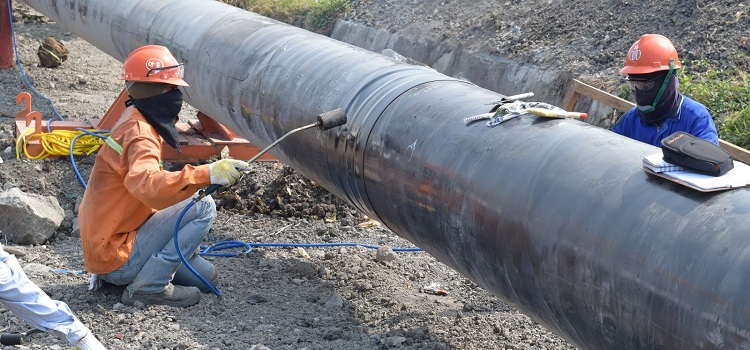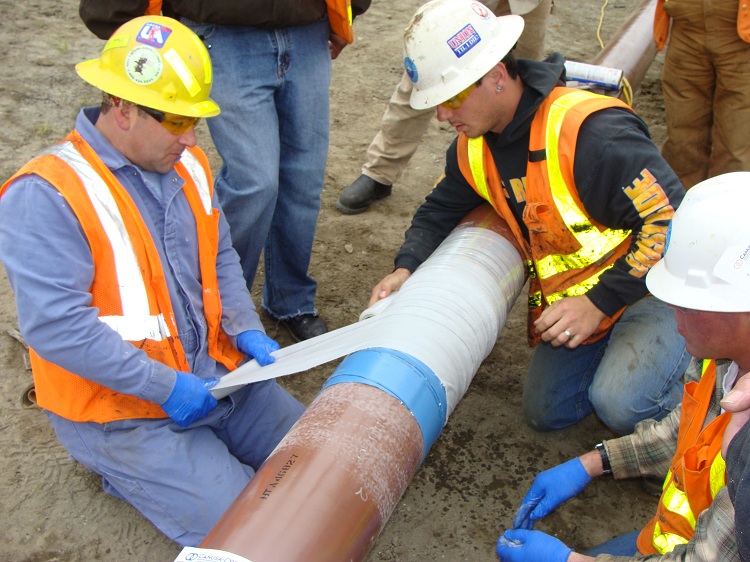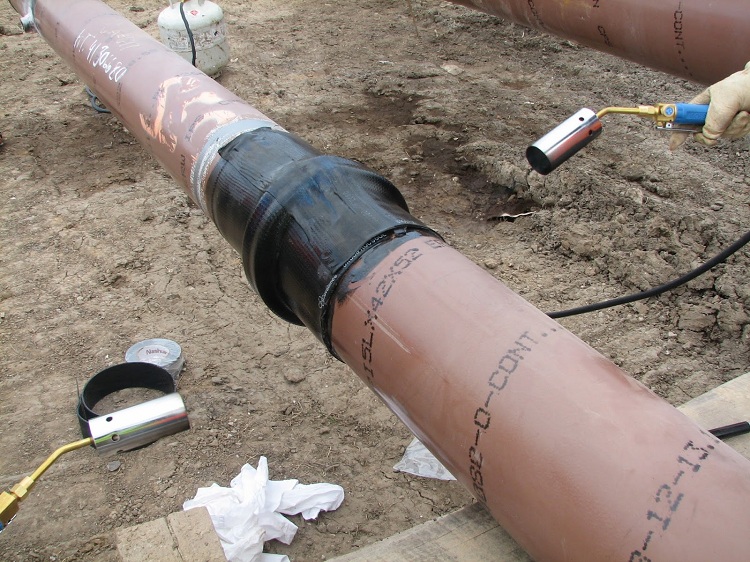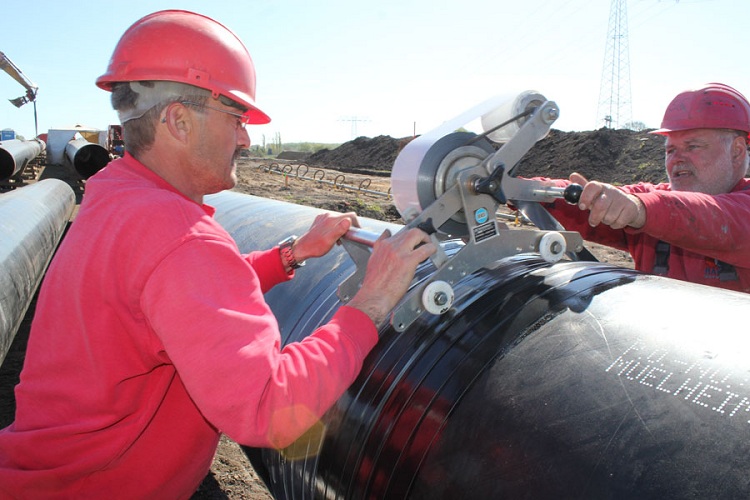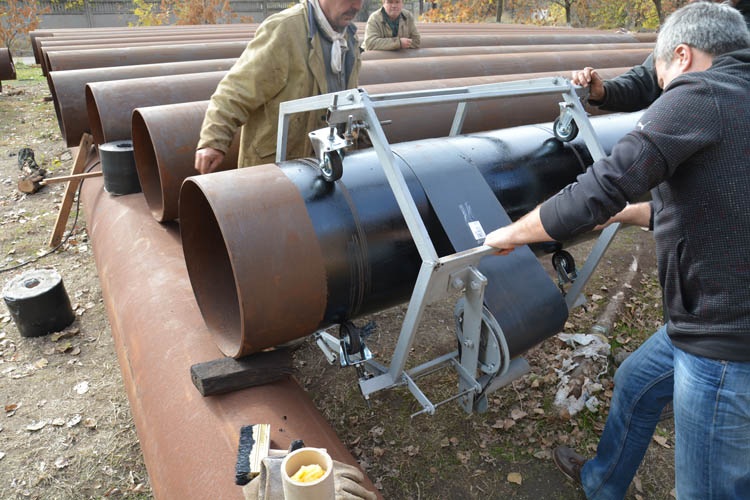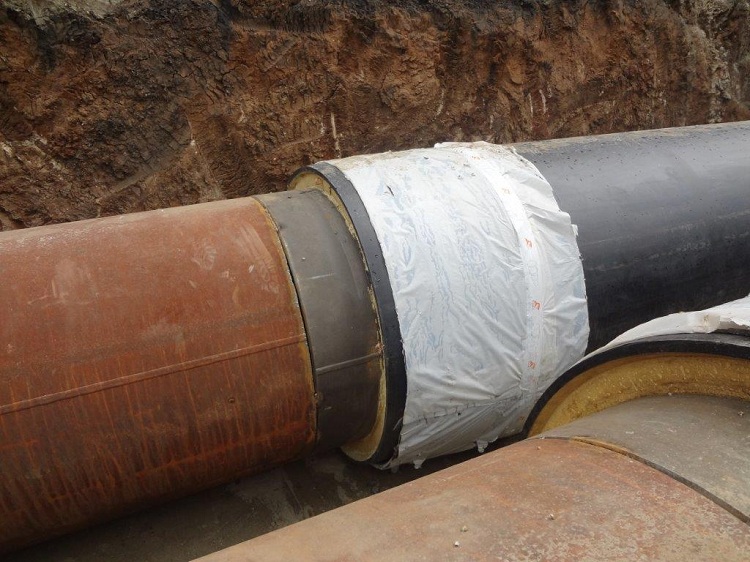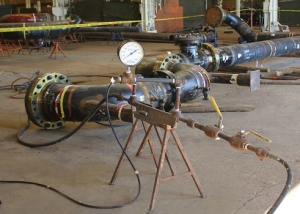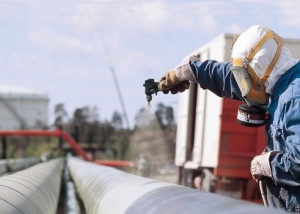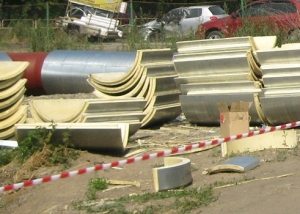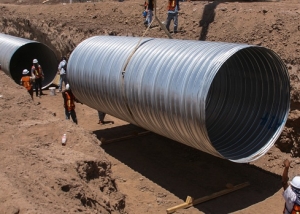Pipeline waterproofing is a necessary measure that is carried out to protect the pipeline from moisture. Today, there are communications, different in material and purpose, to increase the operational life of which it is necessary to organize a suitable waterproofing system. The choice of a waterproofing composite depends on many factors: pipe material, area of use, environmental characteristics, etc.
Content
Types of waterproofing materials for pipes
To organize the waterproofing of various communications, many options for waterproofing are used. Consider the most popular of them:
- polyvinyl chloride (PVC) tape;
- heat shrink tape;
- canvas made of rubber;
- gluing waterproofing Izol;
- polyurethane foam (PUF);
- heat shrinkable couplings.
All of the above materials are characterized by high technical characteristics, the main of which is hydrostability. GThe insulation of various pipes is necessary in order to protect the pipeline from the harmful effects of corrosion, as well as to extend the life of the system as a whole.
Polyvinyl chloride (PVC) tape
Polyvinyl chloride (PVC) tape is very popular in organizing waterproofing of various communications. It has excellent characteristics and is mainly used to protect the outer surface of pipes from the harmful effects of corrosion.
Note! The most popular polyvinyl chloride tape for protecting gas and oil pipelines, which are the main lines.
In addition, today PVC tape is used in the repair of heat pipelines, namely, during the replacement of an old waterproofing system with a communications transporting hot water or gas. In some cases, PVC tape is used for waterproofing household communications.
One side of the polyvinyl chloride tape is supplied at the production stage with a special adhesive composition, which allows its installation to be carried out as conveniently as possible. Before using this tape, it is recommended to carefully check it for cracks and other defects.
Such waterproofing is stored, transported and sold in special rolls that are wound on coils. To protect against moisture, such coils are wrapped with polyethylene.
Heat shrink tape
Such a tape is used in cases where it is necessary to protect the welding joint. The weld joint is the most vulnerable to harmful corrosive effects, so the use of heat-shrink waterproofing tape is a must. However, in some cases it is used to protect the surface of the entire communication, but such cases are extremely rare.
It is important to remember that it is strictly forbidden to use such a tape for mounting on the pipeline in case the operating temperature exceeds 60 ° C. The heat-shrinkable tape provides reliable protection for welded joints and consists of two layers:
- hot-melt layer;
- a layer representing a polyethylene film (PE film is the basis).
In combination with this tape, you can use a special fixing substance - a primer. In this case, such waterproofing is allowed to be used even for pipes that have a coating consisting of three layers.
Consider the main advantages of using heat-shrink waterproofing tape:
- high elasticity, allowing you to mount such a tape on the pipe with virtually no restrictions;
- the material of the tape is highly fire resistant;
- heat-shrink tape does not allow moisture to pass through.
Before mounting such a tape on a pipe, be sure to warm up the pipe to a temperature of 80–100 ° C. To date, there are a lot of varieties of such a tape and you can purchase it without much difficulty.
Such a tape has a weak resistance to ultraviolet rays, so it must be stored in a dark place. Otherwise, it will lose its properties and will be useless. For waterproofing one welded joint of the pipeline, the amount of tape equal to 3.5 indicators of the cross section of the pipe is needed.
Canvas made of rubber
Waterproofing pipes in the ground provides protection against moisture and groundwater in steel pipes and other underground materials. Such insulation is usually carried out by means of a special rubber sheet.
Such a fabric provides reliable protection for a pipeline structure mounted underground from harmful corrosive effects, and also effectively insulates joints between pipes.
As a rule, a rubber sheet is used for waterproofing pipelines that transport oil. In addition to its main function - isolation from groundwater, a rubber sheet is used to protect gas and oil pipelines, brick and reinforced concrete pipelines that transport wastewater.
Note! For waterproofing economic communications, such an insulator is practically not used. This is due to the fact that its transportation is impossible without special equipment.
Consider the main advantages of this waterproofing:
- the main advantage of this waterproofing is its resistance to temperature changes;
- the rubber sheet is resistant to corrosion, as well as aggressive chemical compounds;
- it is resistant to electric fields in the soil;
- has a high coefficient of strength;
- possesses high elasticity;
- and also has a long service life.
Okleyechnaya waterproofing Izol
The Oklyek waterproofing material Izol is resistant to very high temperature indicators. In addition, this material is waterproof and has a high coefficient of strength.
Such material perfectly grasps with the outer wall of the metal pipe and, due to this, provides high sealing performance. Due to its thermal stability, Izol is widely used as a waterproofing system for steel pipes transporting hot water and steam.
However, it is worth noting that the gluing waterproofing of pipes has a low resistance to aggressive chemicals that consist of organic connectors and solvents. This material is classified into several main types depending on the components used in its production.
Wrapping waterproofing is stored, transported and sold in special rolls.In addition to waterproofing metal communications, this material is widely used for waterproofing bridges and other metal structures.
Consider the main advantages of gluing waterproofing Izol:
- good adhesion to metal material and concrete products;
- resistance to high temperatures (up to 150 ° C);
- high strength characteristics;
- high waterproofing performance;
- long service life (up to 50 years).
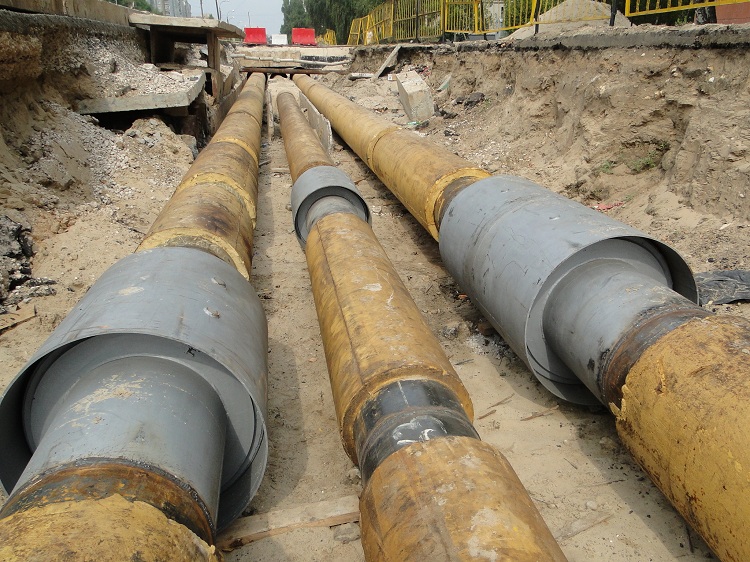
The shell made of polyurethane foam can serve as a protection against moisture and thermal insulation.
Polyurethane foam (PPU) shell
Such a waterproofing device is very popular because of the ease of installation. The shell made of polyurethane foam protects the pipe from corrosive influences, as well as from unwanted heat loss. Therefore, such a material can be considered not only a hydroinsulator, but also a heat insulator.
Note! It is worth noting that even pipes made of modern polymeric materials need protection. This is due to the fact that on the surface of plastic pipes during operation, condensate forms and accumulates, which leads to the development of fungus and mold in the main communications.
Thermo - and waterproofing shell made of polyurethane foam eliminates the possibility of condensation on the surface of metal and plastic pipes. Such an insulator is distinguished by efficiency and reliability, and for its installation no special construction knowledge and skills are required.
Heat Shrinkable Couplings
First of all, it is worth noting that heat-shrinkable waterproofing couplings are put on the pipe before starting welding work, and after that they “sit down” in place of the pipe weld.
Consider the positive aspects of using such a coupling:
- high tightness indicators;
- efficiency and reliability;
- resistance to aggressive chemicals;
- ease of installation;
- long service life.
The choice of the most suitable waterproofing depends on the specific conditions, so for each case it is necessary to select the most suitable waterproofing material. For insulation of welds in a communication that transports hot water, the most suitable option is a waterproofing heat-shrink sleeve. Such a coupling is usually made of polyethylene.
Features of the waterproofing of the chimney
In addition to pipelines laid in the ground, or in an open way, other pipes, for example, stove pipes, also need waterproofing. The waterproofing of the pipe on the roof is carried out by different materials. Consider them:
Bituminous insulating fabrics. Such a waterproofing agent may include the following fabrics:
- cotton (cotton) fabric;
- jute fabric;
- asbestos fabric.
In the production process, any of the above fabrics is impregnated with a solution of soft bitumen. Then from above such fabrics are treated with refractory bitumen.
Metalisol. This material is represented by foil, which in the manufacture is processed by refractory bitumen.
Hydroisol. The production of such material includes the processing of a cardboard sheet with a bitumen mixture. Such material is considered the most suitable for waterproofing pipes on the roof.
Important! The modern roof is represented by several layers that provide excellent waterproofing. These layers include insulation, waterproofing, vapor barrier.
Borulin. Such material is made from two materials: dried asbestos and molten bitumen. Borulin is used in non-standard conditions. For example, if the chimney of the roof is not mounted correctly. Borulin is distinguished by its ductility and high efficiency.
